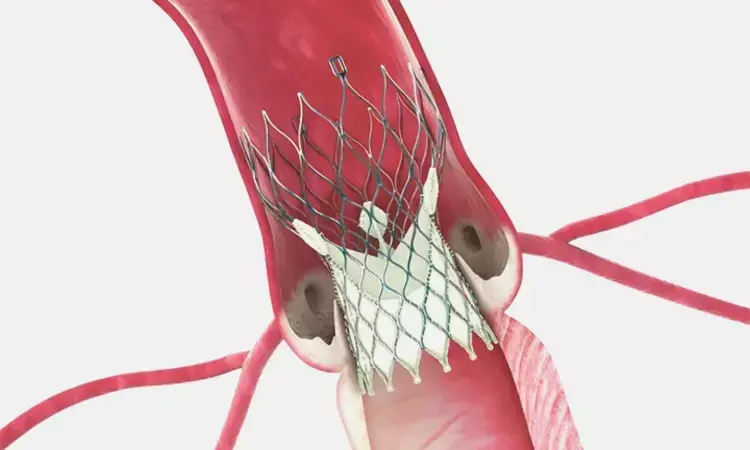- Home
- Medical news & Guidelines
- Anesthesiology
- Cardiology and CTVS
- Critical Care
- Dentistry
- Dermatology
- Diabetes and Endocrinology
- ENT
- Gastroenterology
- Medicine
- Nephrology
- Neurology
- Obstretics-Gynaecology
- Oncology
- Ophthalmology
- Orthopaedics
- Pediatrics-Neonatology
- Psychiatry
- Pulmonology
- Radiology
- Surgery
- Urology
- Laboratory Medicine
- Diet
- Nursing
- Paramedical
- Physiotherapy
- Health news
- Fact Check
- Bone Health Fact Check
- Brain Health Fact Check
- Cancer Related Fact Check
- Child Care Fact Check
- Dental and oral health fact check
- Diabetes and metabolic health fact check
- Diet and Nutrition Fact Check
- Eye and ENT Care Fact Check
- Fitness fact check
- Gut health fact check
- Heart health fact check
- Kidney health fact check
- Medical education fact check
- Men's health fact check
- Respiratory fact check
- Skin and hair care fact check
- Vaccine and Immunization fact check
- Women's health fact check
- AYUSH
- State News
- Andaman and Nicobar Islands
- Andhra Pradesh
- Arunachal Pradesh
- Assam
- Bihar
- Chandigarh
- Chattisgarh
- Dadra and Nagar Haveli
- Daman and Diu
- Delhi
- Goa
- Gujarat
- Haryana
- Himachal Pradesh
- Jammu & Kashmir
- Jharkhand
- Karnataka
- Kerala
- Ladakh
- Lakshadweep
- Madhya Pradesh
- Maharashtra
- Manipur
- Meghalaya
- Mizoram
- Nagaland
- Odisha
- Puducherry
- Punjab
- Rajasthan
- Sikkim
- Tamil Nadu
- Telangana
- Tripura
- Uttar Pradesh
- Uttrakhand
- West Bengal
- Medical Education
- Industry
Use of cusp-overlapping projection in TAVR reduces rate of permanent pacemaker implantation: JACC

Spain: A novel cusp-overlapping projection (COP) technique was shown to significantly reduce the rate of permanent pacemaker implantation (PPMI) in self-expanding (SE) transcatheter heart valve (THV) implantation versus the classical implantation technique, states a recent study. Also, both the techniques were found to have similar rates of complications.
"The findings imply that the COP implantation technique is a safe and feasible modification to the transcatheter aortic valve replacement (TAVR) protocol, " Isaac Pascual, Research Institute of the Principado de Asturias, Oviedo, Spain, and colleagues wrote in their study published in the journal JACC: Cardiovascular Interventions. "This is the first study to systematically evaluate this approach for SE THVs in different populations."
The COP technique was shown to have a potential benefit of an optimized implantation depth to reduce the PPMI rate. However, not many studies have compared clinical outcomes with those achieved using the standard technique.
Considering the above, Dr. Pascual and colleagues conducted the study with an aim to determine if modifying the classical implantation technique for SE transcatheter aortic valve replacement to a novel COP technique leads to a higher implantation depth (ID) and a subsequent reduction in the rates of PPMI.
The study included 444 consequent patients beginning in February 2015. Because of the observational nature of the study propensity score matching was used to control baseline characteristics. A total of 161 pairs of patients were analyzed. Three methods were used to measure ID (noncoronary cusp [NCC] to the THV, mean of the NCC and the left coronary cusp [LCC] to the THV, and the deepest edge from the LCC and the NCC to the THV).
Based on the study, the authors gave the following findings:
- ID was significantly higher in COP cases when measuring from the NCC (4.2 mm vs 5.3 mm) and the mean from the NCC and the LCC (5.3 mm vs 5.9 mm), but not from the deepest edge.
- The PPMI rate was lower in the COP group: 19 (11.8%) vs 35 (21.7%) (relative risk: 0.54).
The authors conclude, "COP technique significantly reduces PPMI in SE THV implantation compared with the classical implantation technique, with similar rates of complications."
Reference:
The study titled, "Permanent Pacemaker Reduction Using Cusp-Overlapping Projection in TAVR: A Propensity Score Analysis," was published in the journal JACC: Cardiovascular Interventions.
Dr Kamal Kant Kohli-MBBS, DTCD- a chest specialist with more than 30 years of practice and a flair for writing clinical articles, Dr Kamal Kant Kohli joined Medical Dialogues as a Chief Editor of Medical News. Besides writing articles, as an editor, he proofreads and verifies all the medical content published on Medical Dialogues including those coming from journals, studies,medical conferences,guidelines etc. Email: drkohli@medicaldialogues.in. Contact no. 011-43720751


